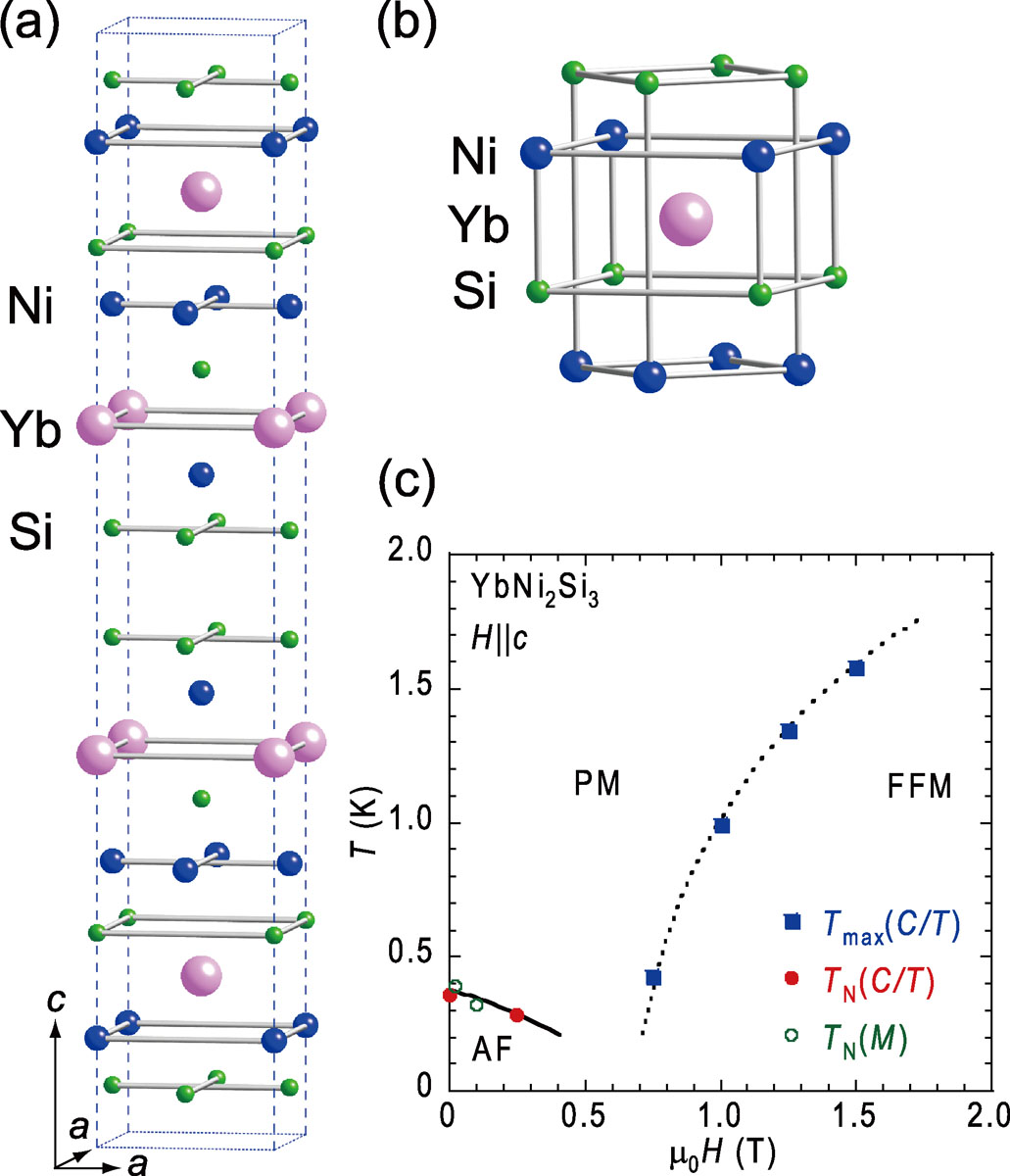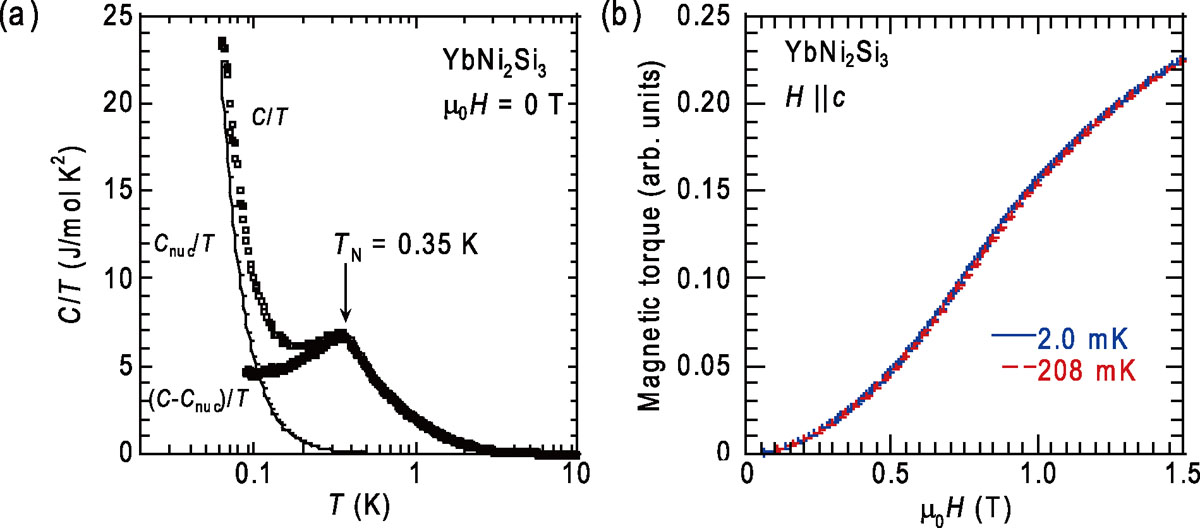Heavy Fermion State of YbNi2Si3 without Local Inversion Symmetry
S. Nakamura, T. Sakakibara, and M. Yamashita
Various fascinating phenomena often appear in the materials without the global inversion symmetry. It is theoretically suggested that both global and local inversion-symmetry-breaking host an exotic superconductivity. This study focuses on the materials in which only the local inversion symmetry is broken. There are not much examples showing superconductivity in the materials without the local inversion symmetry, but the local inversion symmetry is broken in high temperature superconductors such as iron-based and copper-oxide superconductors.
We discover a new heavy-fermion compound YbNi2Si3 in which the local inversion symmetry at ytterbium site is broken (Fig. 1(a) and (b)), whereas the global inversion symmetry is retained. The space group of this material is I4/mmm, and the site symmetry at Yb-ion is 4mm. This crystal structure is partially similar to tetragonal ThCr2Si2-type crystal structure; CeCu2Si2 and URu2Si2 are well known as heavy-fermion superconductors. Rare-earth metal, transition metal, and silicone atoms form a square lattice on the c plane both in these two crystal structures.
The electrical resistivity, the magnetization, the magnetic torque and the heat capacity measurements have been performed in YbNi2Si3, and we check if there is a superconducting state without the local inversion symmetry. We determine the H–T phase diagram of YbNi2Si3 by the magnetization and the heat capacity measurements (Fig. 1(c)). We find an antiferromagnetic state appears below 0.35 K at zero magnetic field, and it is suppressed by applying a magnetic field of 0.7 T. The temperature dependence of the electrical resistivity shows a typical heavy-fermion behavior with the Kondo temperature of ~ 2 K. Remarkably, a large electronic specific heat coefficient of γ = 5 J/mol K2 is found to remain down to 0.08 K in the antiferromagnetic state (Fig. 2(a)), demonstrating a heavy-fermion state in YbNi2Si3. Such large entropy is often released by a superconducting transition at a lower temperature. To this end, we have carried out the magnetic torque measurements down to ultralow temperatures. However, no discernible change is observed down to 2 mK (Fig. 2(b)), showing the persistence of the heavy-fermion state. We further check the valence state of the Yb ions via hard X-ray photoemission spectroscopy, and find that almost all the Yb-ions are in the Yb3+ state, showing the absence of the valence fluctuation between Yb2+ and Yb3+. This absence would suggest that the origin of the heavy-fermion state is a magnetic fluctuation rather than a valence-fluctuation, which often expected in Yb compounds. It remains as a important future issue to reveal the origin of the heavy-fermion state in YbNi2Si3 by microscopic measurements such as NMR.
References
- [1] S. Nakamura, K. Hyodo, Y. Matsumoto, Y. Haga, H. Sato, S. Ueda, K. Mimura, K. Saiki, K. Iso, M. Yamashita, S. Kittaka, T. Sakakibara, and S. Ohara, J. Phys. Soc. Jpn. 89, 024705 (2020).


